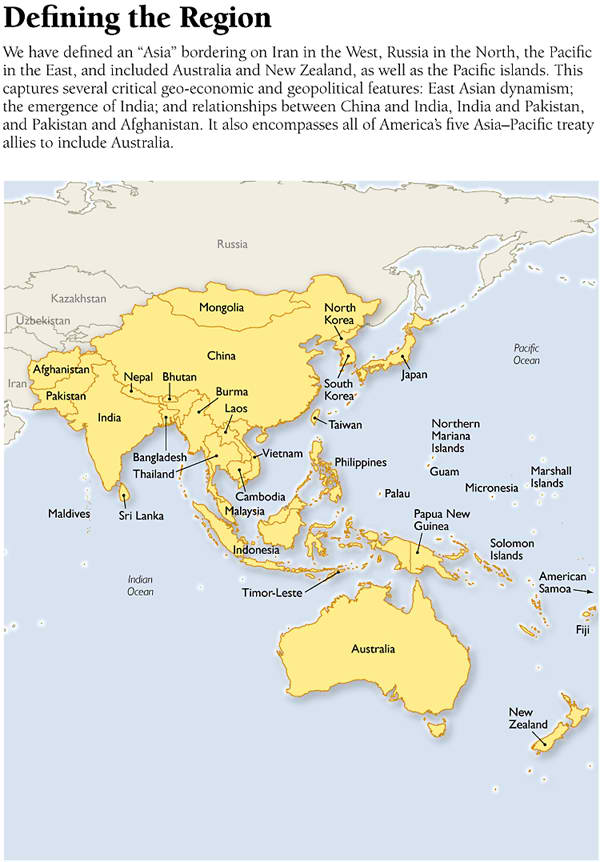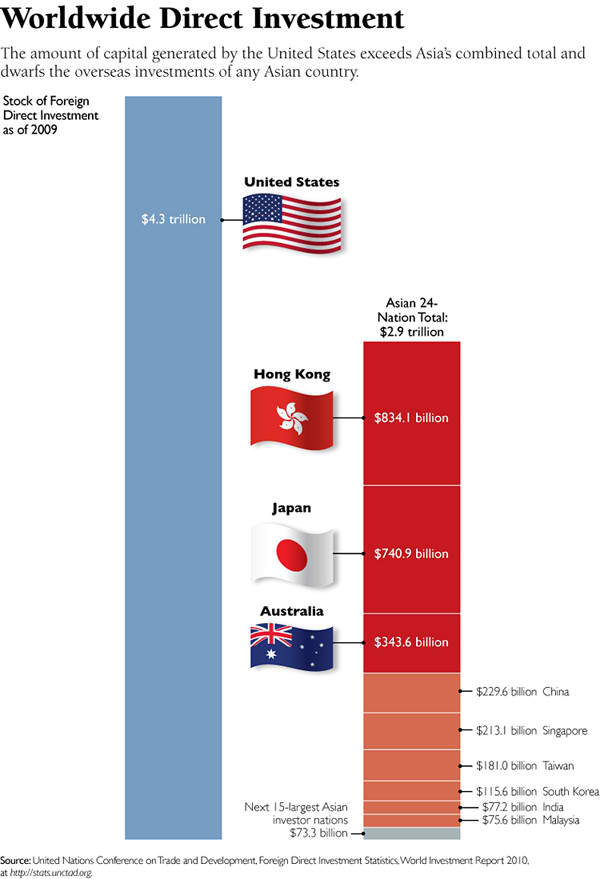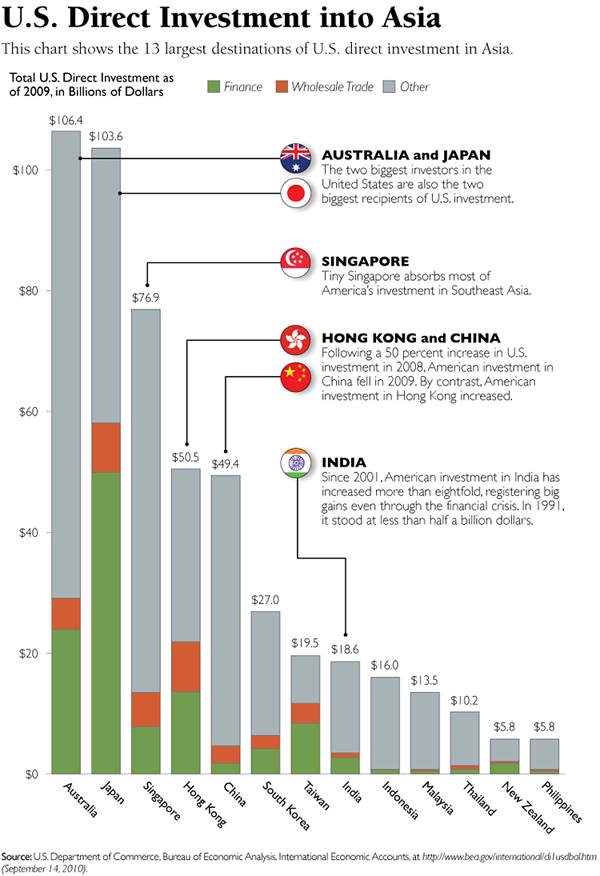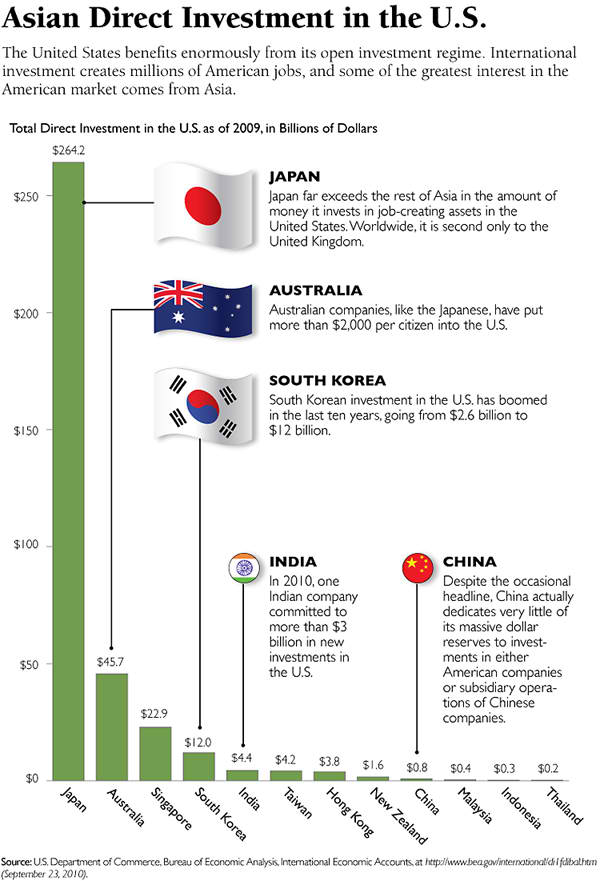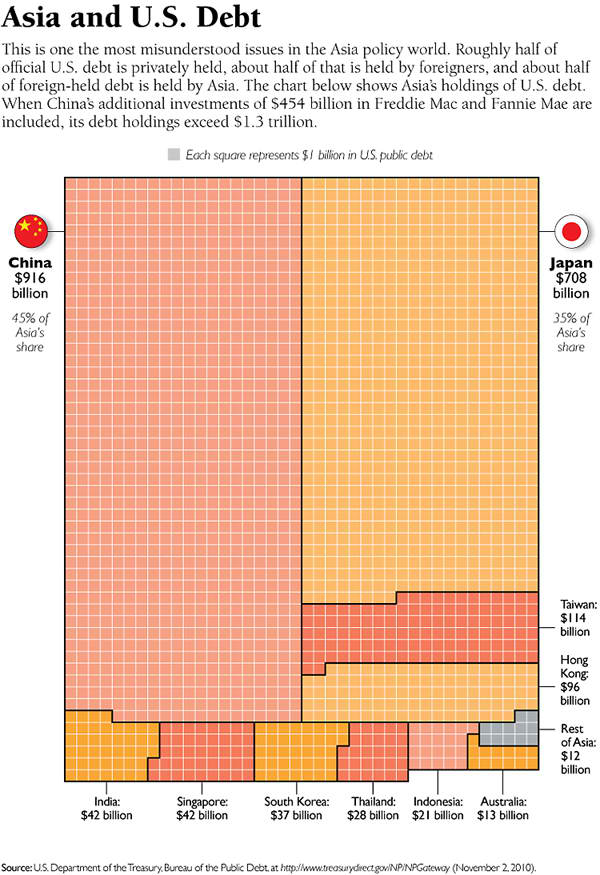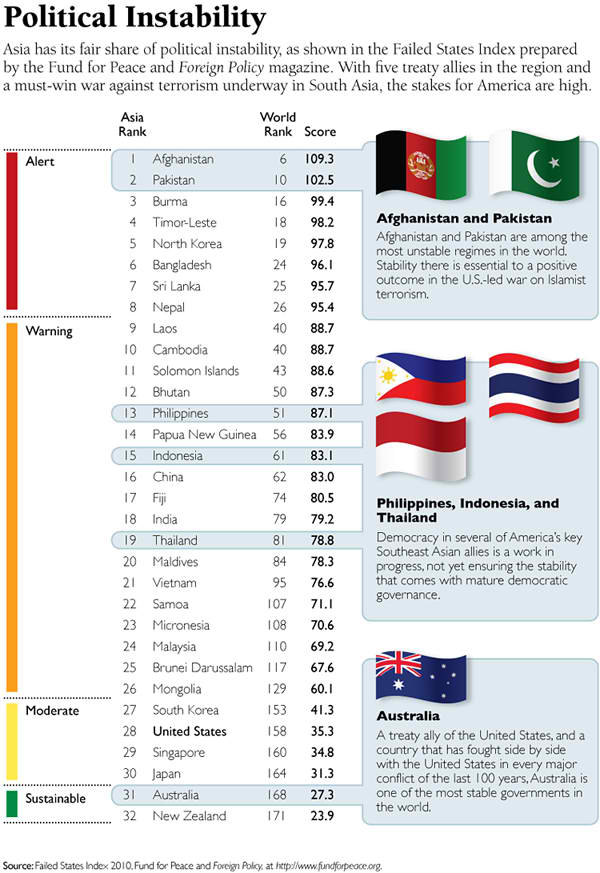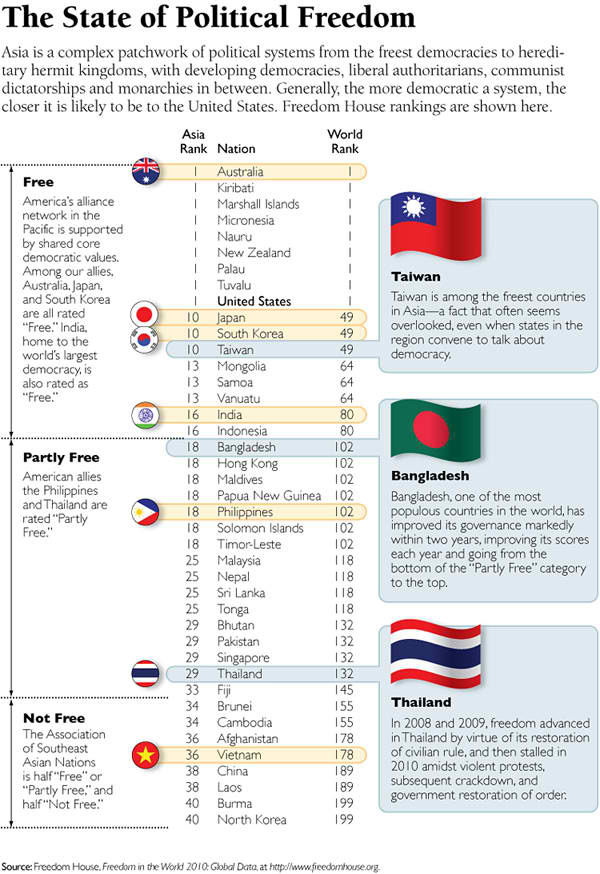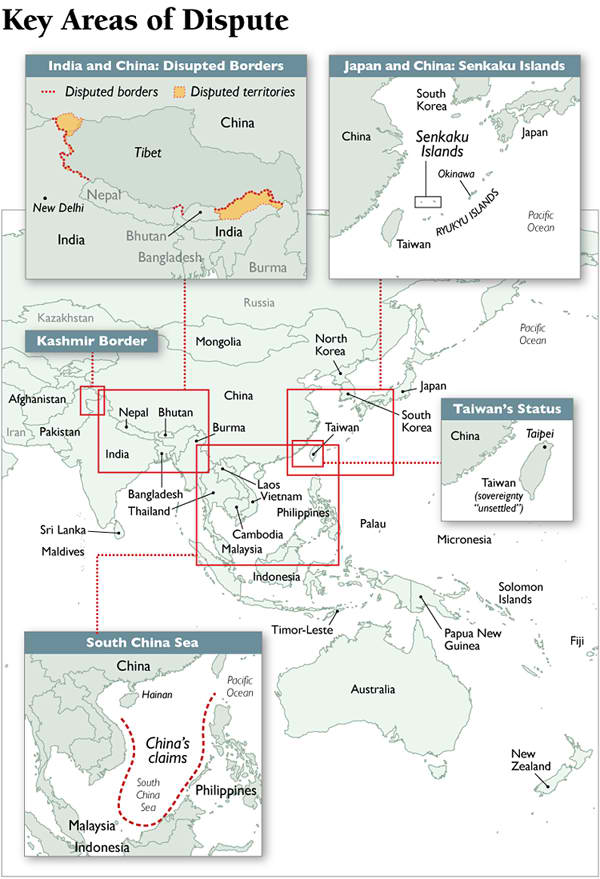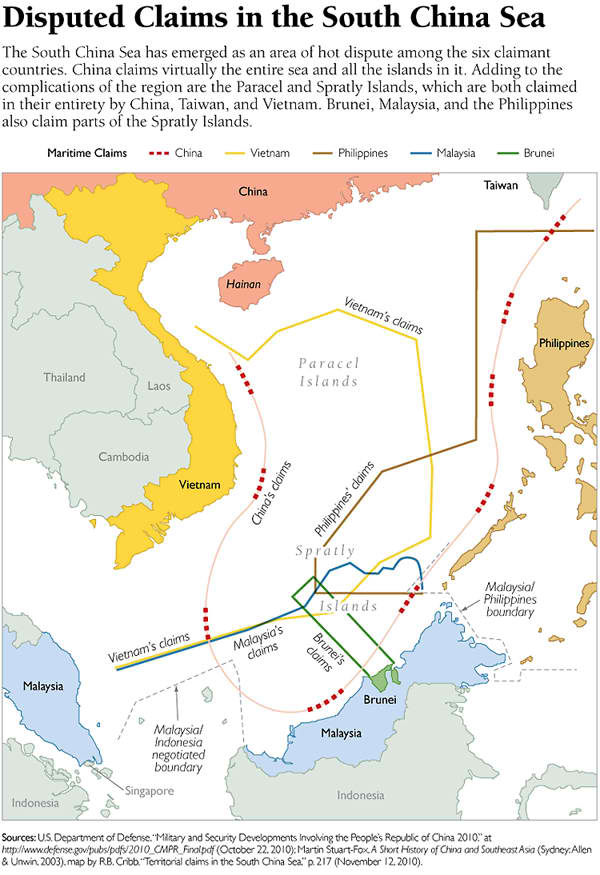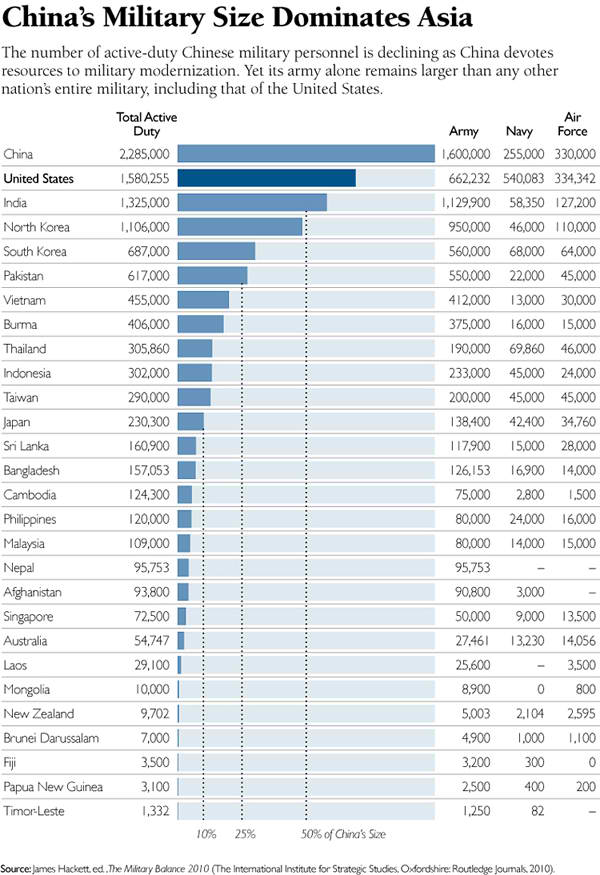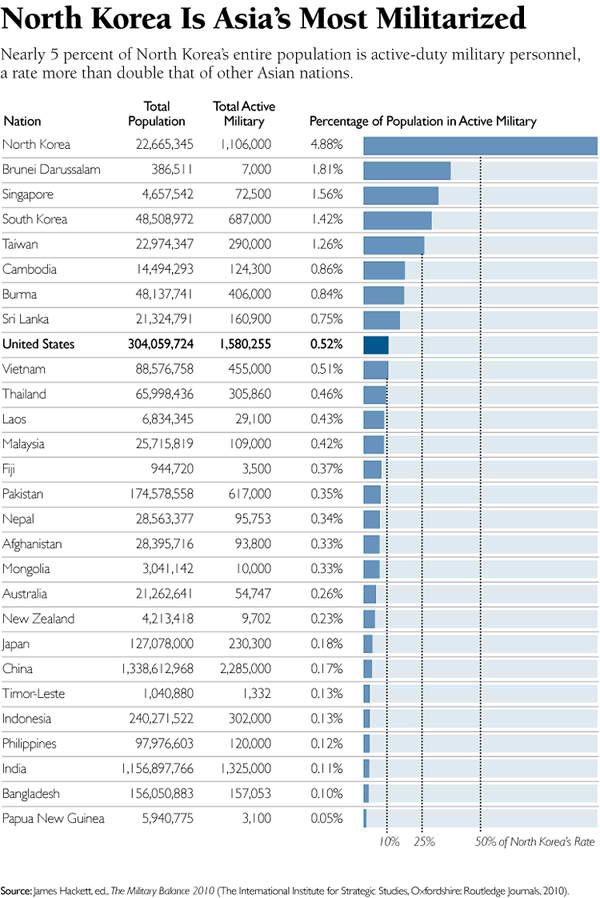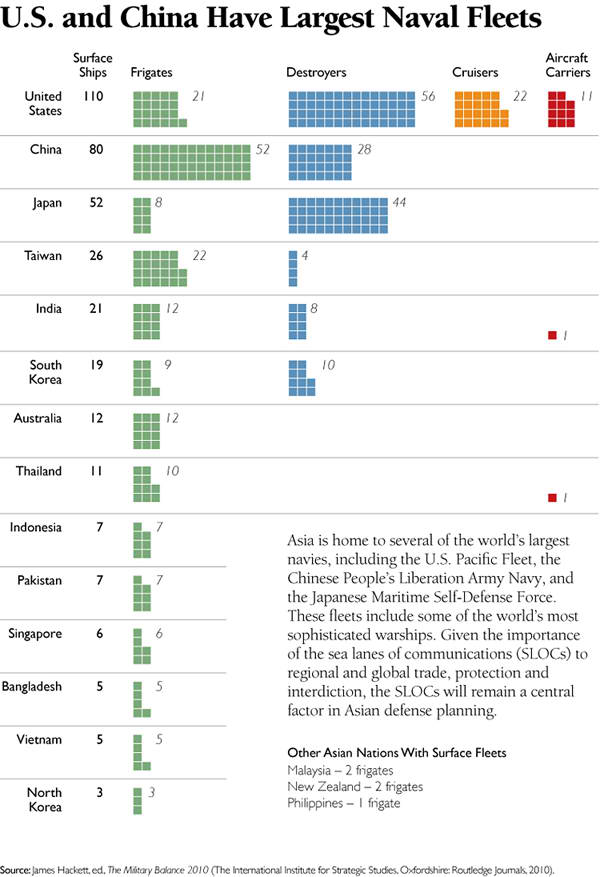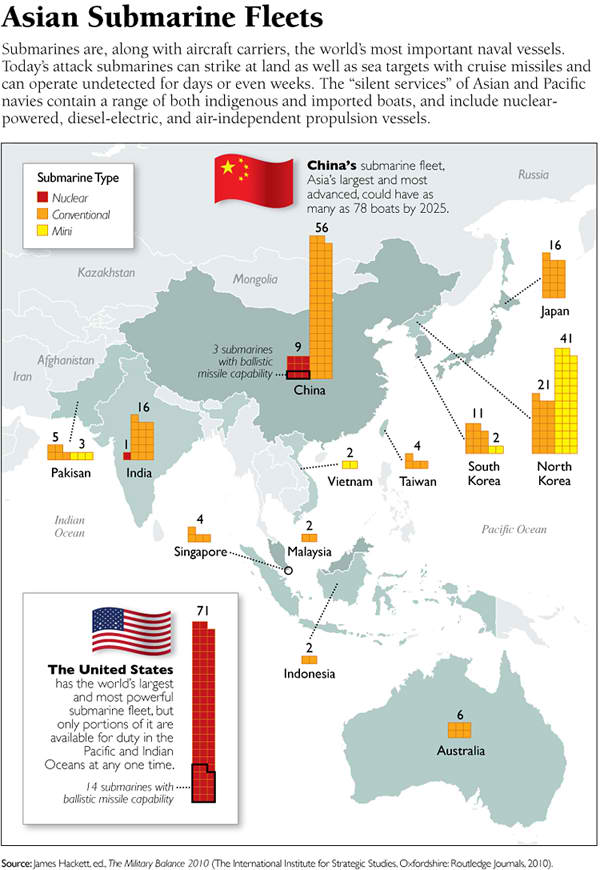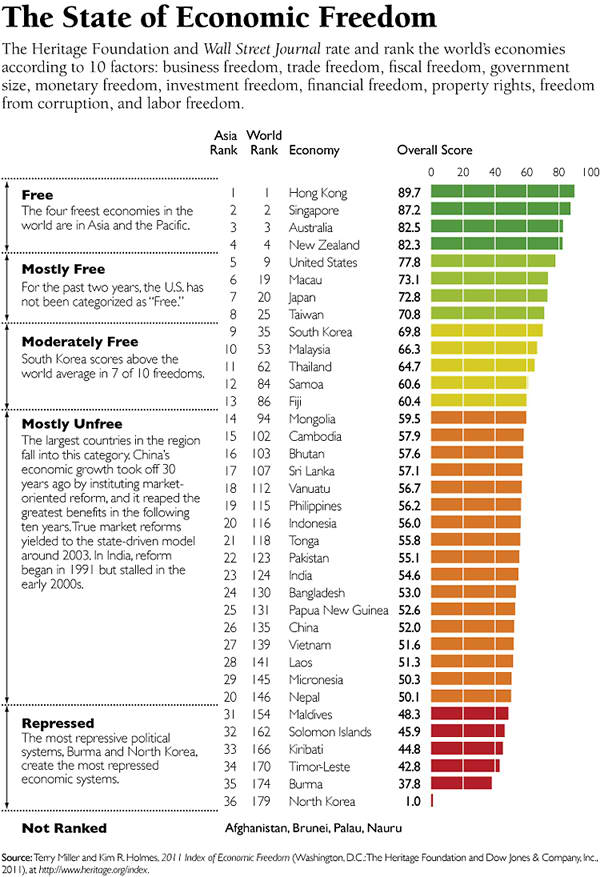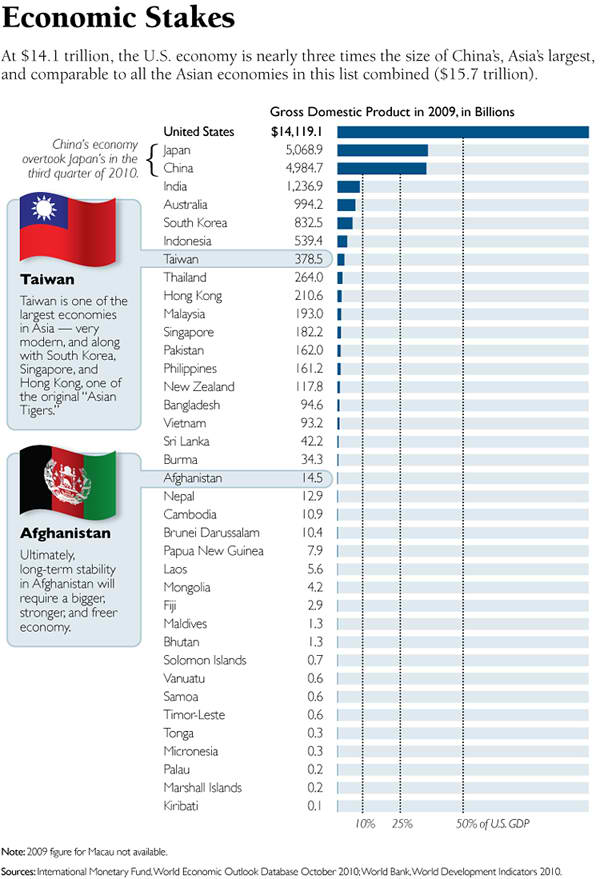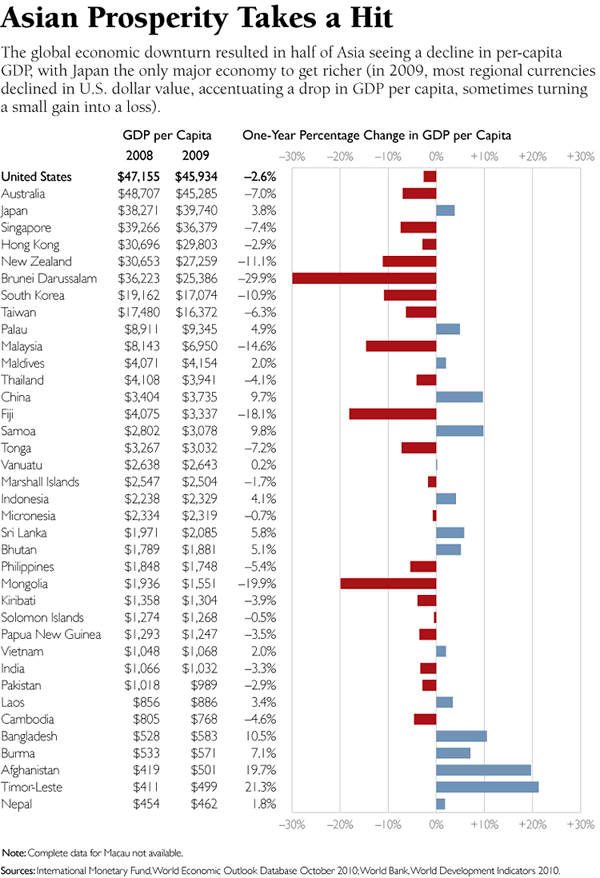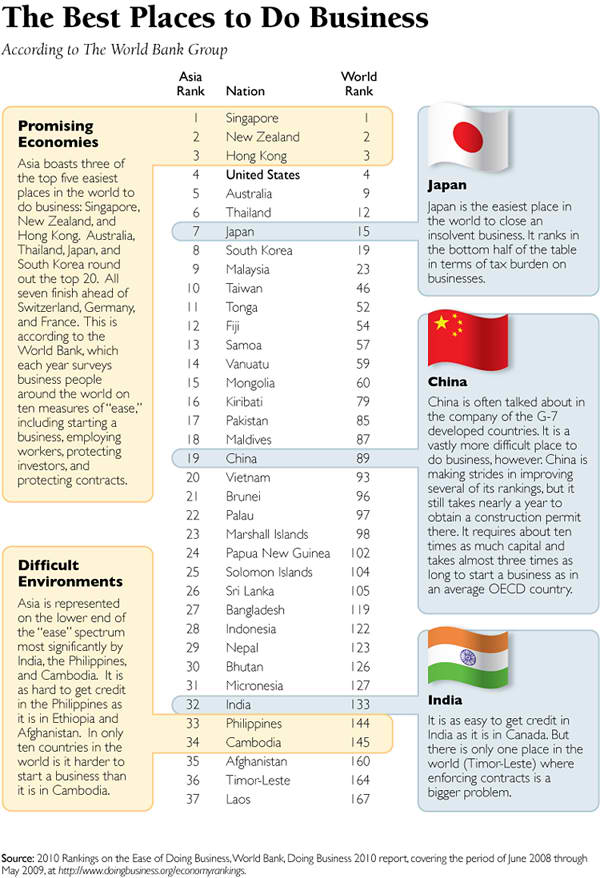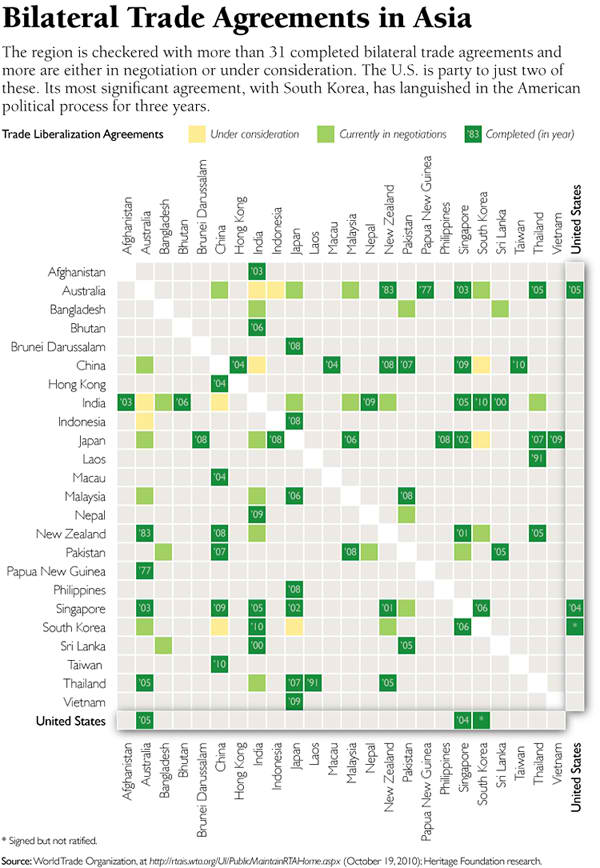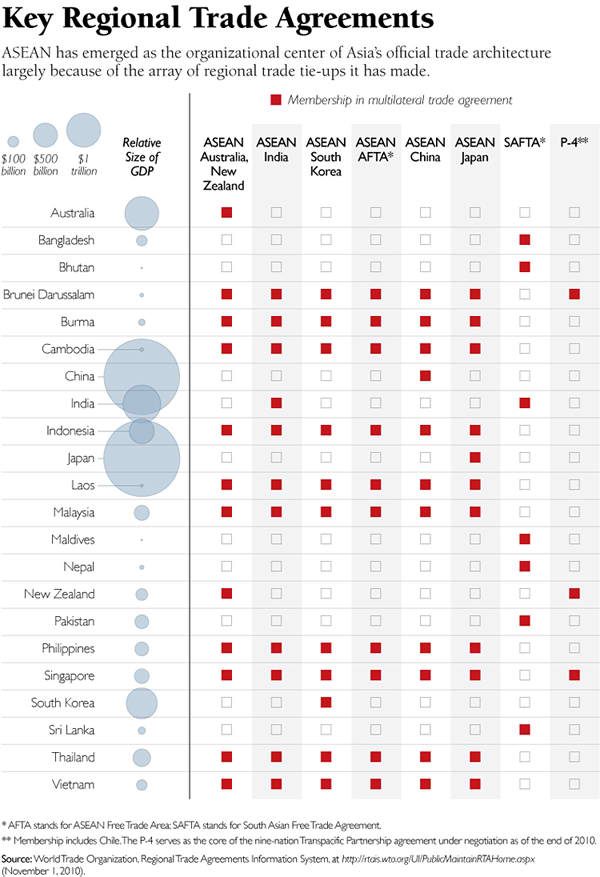The global financial crisis has had a major impact on perceptions of American power and its relationships in Asia. Many of the perceptions are not founded on facts. Among the facts often overlooked:
- American companies invest far more abroad than does all of Asia combined.
- For every dollar the U.S. has invested in China it has invested two in Australia and two in Japan.
- Less than half of what Asia invests in government bonds comes from China.
- The American economy is larger than China’s and Japan’s combined.
Even as doubts have arisen concerning American influence, developments over the last two years point to the critical need for American leadership: China’s assertion of exclusive rights in international waters; North Korean nuclear tests, missile launches, and naval attacks; instability, terrorism, and war in South Asia; and tyranny in places like Burma.
The political landscape giving rise to these problems is shaped by several measurable factors, including:
- China has the second-largest naval fleet of any Pacific power, and in pure numbers, the largest military.
- Afghanistan and Pakistan are two of the least stable regimes in the world.
- Burma and North Korea are among the world’s most repressive regimes.
- North Korea has the most militarized population in the world.
There are also facts that illustrate the vast opportunity in Asia:
- The four freest economies in the world are in Asia.
- The two largest economies after America’s are in Asia.
- The best places in the world to do business are in Asia.
- In the last 20 years, prosperity in several Asian countries has greatly expanded—often doubling GDP per capita.
- The region is booming in free trade arrangements—only two of which currently include the United States.
The United States is a Pacific power. It is also the most trusted player in the region. For 60 years, it has served as the region’s security backbone. Absent American predominance, the region would be neither as peaceful nor as prosperous, and a turbulent Pacific would have direct implications for America’s future.
Walter Lohman is Director of the Asian Studies Center, John Fleming is Senior Data Graphics Editor, and Nicholas Hamisevicz is a Research Associate in the Asian Studies Center at The Heritage Foundation.
Download the Entire Report (PDF)
